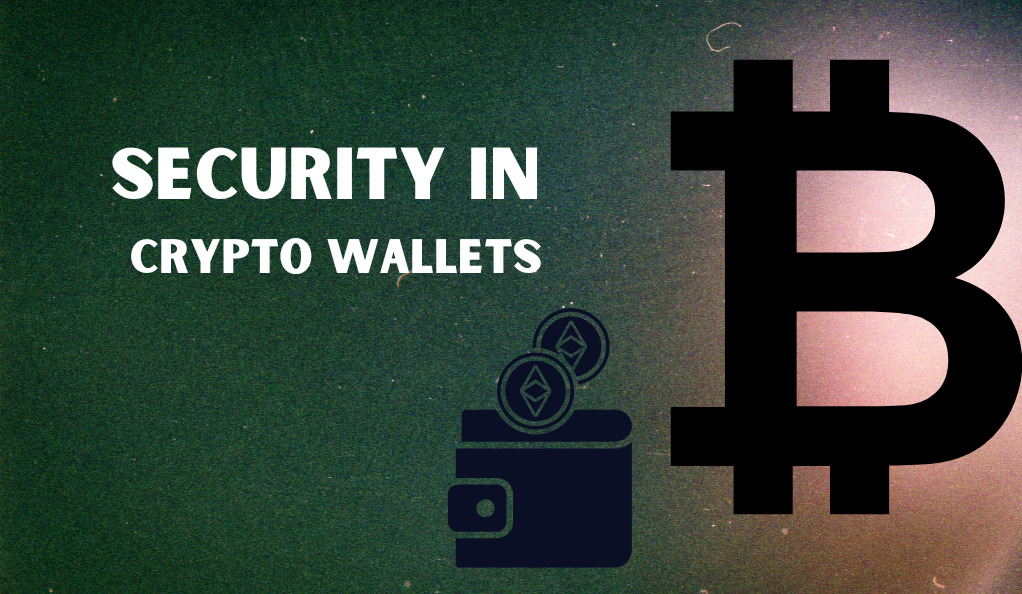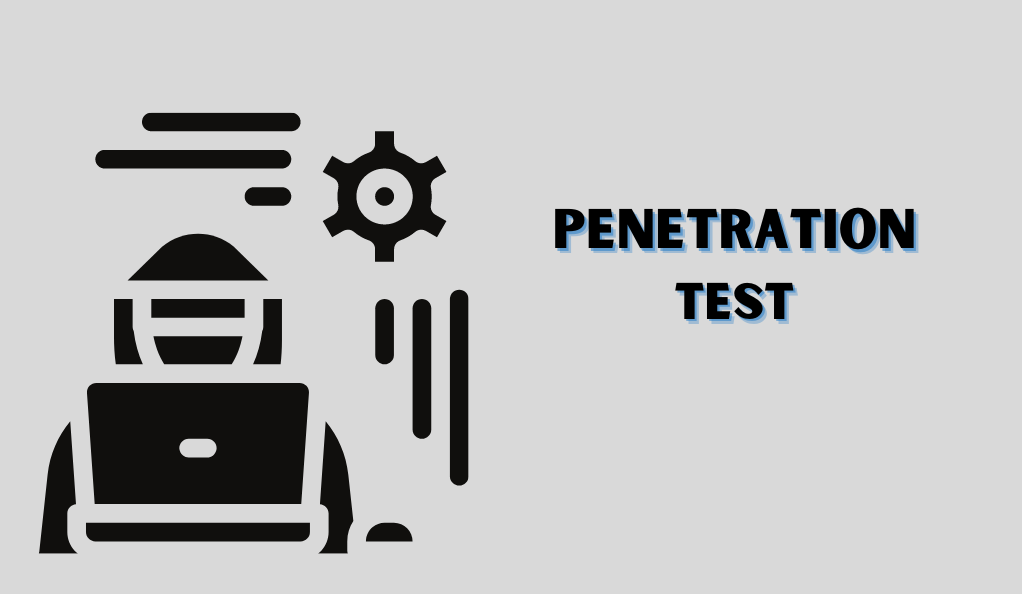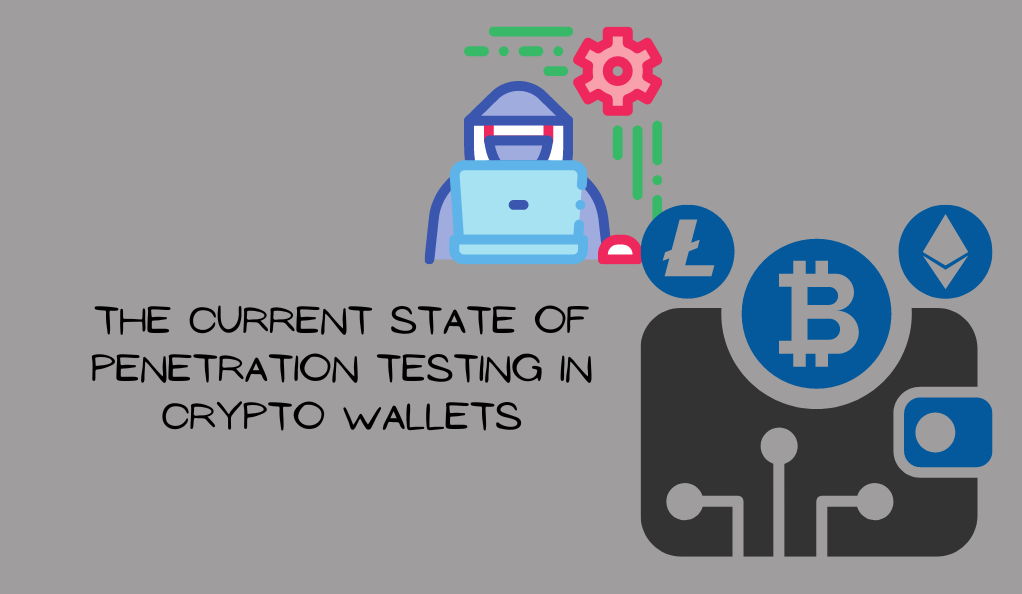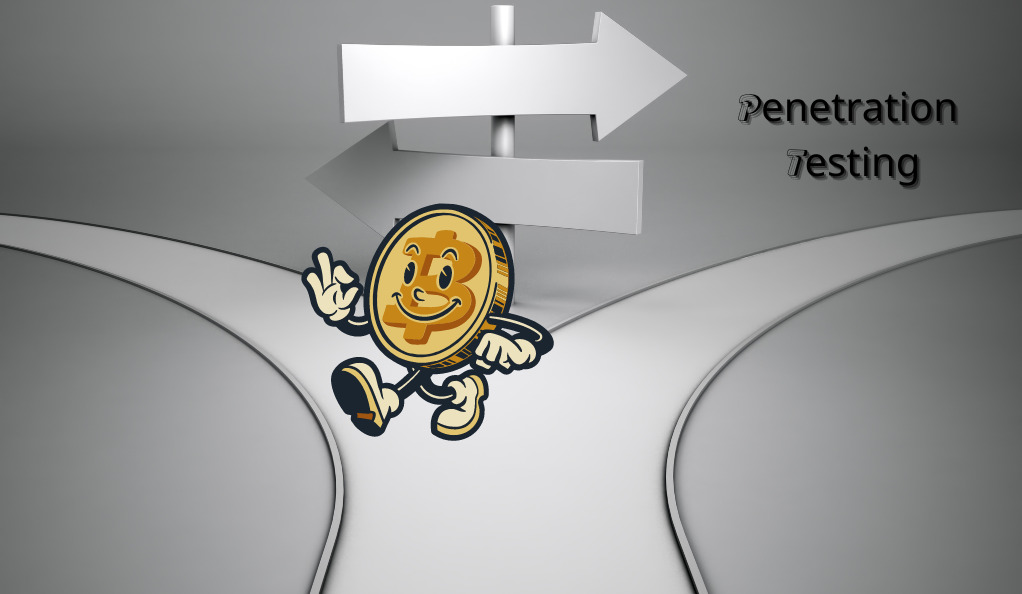In the rapidly evolving world of cryptocurrencies, the security of digital assets is paramount. As the adoption of cryptocurrencies grows, so does the need for robust security measures to protect these assets. One of the most critical and effective security measures in this domain is penetration testing, especially for crypto wallets. This article delves deep into the significance of penetration testing in crypto wallets and why it’s a crucial step in ensuring the safety of your digital assets.
A crypto wallet is a digital tool that allows users to store, send, and receive cryptocurrencies. These wallets can be hardware-based (physical devices) or software-based (applications or online platforms). Regardless of the type, the primary function remains the same: to safeguard the private keys that grant access to one’s cryptocurrency holdings.
The Need for Security in Crypto Wallets

With the increasing value and adoption of cryptocurrencies, the threats against them have also risen. From phishing attacks to malware and even physical theft, the avenues for potential breaches are numerous. Given the irreversible nature of cryptocurrency transactions, once assets are stolen, recovering them is nearly impossible. Hence, the security of crypto wallets becomes non-negotiable.
Penetration Testing: A Deep Dive
- Definition: Penetration testing, often referred to as “pentesting,” is a simulated cyber attack against a system, in this case, a crypto wallet, to identify vulnerabilities that could be exploited by attackers.
- Purpose: The primary goal is to identify weak spots in a wallet’s system before malicious hackers do, thereby preventing potential breaches.
Why is Penetration Testing Crucial for Crypto Wallets?
- Proactive Approach: Instead of waiting for an attack to happen, penetration testing takes a proactive stance, identifying and rectifying vulnerabilities in advance.
- Real-world Simulation: Penetration testing simulates real-world attack scenarios, providing insights into how an actual attack might occur and the potential consequences.
- Trust Building: For crypto wallet providers, regularly conducting and updating penetration tests can build trust among their user base, showcasing their commitment to security.
Penetration Testing vs. Other Security Measures
| Security Measure | Description | Primary Benefit |
|---|---|---|
| Penetration Testing | Simulated cyber attacks to find vulnerabilities | Proactive identification of security flaws |
| Bug Bounties | Rewards for external individuals who identify and report bugs | Crowdsourced vulnerability detection |
| Encryption | Encoding data to prevent unauthorized access | Protects data at rest and during transmission |
| Multi-Signature | Requires multiple private keys for a transaction | Adds an extra layer of security for transactions |
The Current Landscape of Penetration Testing in Crypto Wallets
Despite its importance, penetration testing is not as widely adopted in the crypto space as one might expect. A recent report highlighted that only a fraction of crypto wallet brands have undergone comprehensive penetration testing. The reasons vary, from the perceived high costs of testing to a reliance on other security measures like bug bounties. However, as the crypto market matures, the demand for thorough security evaluations, including penetration testing, is bound to increase.
What is Penetration Testing?

In the vast realm of cybersecurity, penetration testing stands out as a proactive and essential measure to safeguard digital assets and systems. As cyber threats become more sophisticated, understanding the nuances of penetration testing and its distinction from other security measures becomes crucial.
Definition of Penetration Testing
Penetration Testing, often abbreviated as “pentesting”, is a systematic process where cybersecurity professionals simulate cyberattacks on a system, network, or application to identify vulnerabilities that real attackers could exploit. Unlike real attacks, the goal isn’t to cause harm but to uncover weaknesses.
Significance of Penetration Testing
- Proactive Security: Instead of reacting to breaches after they occur, penetration testing offers a proactive approach, allowing organizations to identify and address vulnerabilities before they can be exploited.
- Real-world Insights: By simulating real-world attack scenarios, penetration testing provides invaluable insights into how an actual breach might unfold and the potential ramifications.
- Regulatory Compliance: Many industries mandate regular penetration tests to comply with regulations, ensuring that sensitive data, especially customer information, is protected.
- Trust and Reputation: For businesses, especially those in the tech and finance sectors, undergoing regular penetration tests and addressing vulnerabilities can enhance their reputation and foster trust among clients and stakeholders.
How Penetration Testing Differs from Other Security Measures
While penetration testing is a vital component of a comprehensive security strategy, it’s essential to understand how it stands apart from other measures:
Scope:
Unlike vulnerability assessments that provide a broad overview of potential weak spots, penetration tests actively exploit these vulnerabilities, mimicking the actions of real attackers.
Depth:
While automated security tools might scan for known vulnerabilities, penetration tests often involve manual techniques, delving deeper into the system to uncover hidden or complex flaws.
Intent:
Measures like firewalls or intrusion detection systems are designed to prevent or detect attacks. In contrast, penetration testing actively seeks out vulnerabilities by initiating a controlled form of attack.
Duration:
Some security measures, like antivirus software, operate continuously. Penetration tests, however, are periodic, often conducted annually or in response to significant system changes.
The Current State of Penetration Testing in Crypto Wallets

The cryptocurrency landscape has seen exponential growth, both in terms of adoption and technological advancements. With this growth comes the pressing need for robust security measures, especially as cyber threats targeting crypto assets become more sophisticated. Penetration testing, a pivotal security measure, has been at the forefront of this battle. However, its adoption among crypto wallet providers paints a concerning picture.
The Stark Reality: Findings from the CER Report
A recent report by the Cybersecurity certification platform CER has shed light on the penetration testing practices of crypto wallet brands, revealing some alarming statistics:
Limited Adoption: Out of the numerous crypto wallet brands in the market, only a meager 13.3% have subjected their systems to penetration testing. This low percentage underscores a potential oversight in the security measures adopted by many brands.
The Gravity of the Situation: Given the irreversible nature of cryptocurrency transactions and the high value of assets stored in wallets, this limited adoption of penetration testing can expose users to significant risks.
Leading the Charge: Brands Prioritizing Security
While the overall picture might seem grim, certain brands have recognized the importance of penetration testing and have taken proactive steps:
MetaMask: A popular Ethereum-based wallet, MetaMask has not only undergone penetration testing but has also consistently updated its security measures, ensuring that users’ assets remain protected against evolving threats.
ZenGo: This wallet brand has showcased its commitment to user security by performing up-to-date penetration tests, ensuring that vulnerabilities are identified and rectified promptly.
Trust Wallet: As a leading name in the crypto wallet space, Trust Wallet’s decision to undergo penetration testing sets a positive precedent for other brands, emphasizing the importance of such security measures.
The Implications for the Crypto Community
The findings from the CER report serve as a wake-up call for the crypto community:
User Awareness: Users must be vigilant and prioritize security when choosing a crypto wallet. Opting for brands that regularly conduct penetration tests can offer an added layer of protection.
Industry Standards: The crypto industry, as a whole, needs to recognize the importance of penetration testing and consider making it a standard practice. This can not only enhance security but also foster trust among users.
Why Many Wallet Brands Skip Penetration Testing?

The digital realm of cryptocurrencies is fraught with potential security risks, making the need for robust protective measures like penetration testing undeniable. However, a closer look at the industry reveals a surprising trend: many crypto wallet brands, despite the evident risks, opt to skip this crucial security measure. Delving into the reasons behind this decision provides insights into the challenges and priorities of these brands.
The Financial Burden: High Costs of Regular Testing
Penetration testing, while invaluable, comes with its set of challenges:
- Financial Implications: Conducting comprehensive penetration tests, especially by reputable cybersecurity firms, can be a costly affair. For startups or smaller wallet brands with limited funding, allocating substantial resources for regular testing might strain their budgets.
- Frequent Software Updates: The dynamic nature of the crypto industry means that wallet software often undergoes frequent updates and revisions. Each update potentially introduces new vulnerabilities, necessitating another round of penetration testing. This cycle can quickly escalate costs, making it financially unviable for some brands.
Betting on Alternatives: Reliance on Other Security Measures
While penetration testing is undeniably effective, some wallet brands believe in leveraging alternative security measures:
Bug Bounties: Many brands have turned to bug bounty programs as a cost-effective alternative. By offering rewards to external individuals who identify and report vulnerabilities, these brands tap into the vast pool of independent security researchers. This crowdsourced approach can be more affordable and offers continuous vulnerability detection.
In-house Security Teams: Some wallet providers invest in building strong in-house security teams, believing that continuous internal monitoring can preempt potential threats. While this approach has its merits, it might miss out on the diverse perspectives and techniques that external penetration testers bring to the table.
Automated Security Tools: Automated tools can scan for known vulnerabilities at a fraction of the cost of manual penetration tests. However, they might not be as thorough or adept at identifying complex, multi-layered vulnerabilities.
The Perceived Trade-off
For some wallet brands, the decision to skip penetration testing boils down to a perceived trade-off:
- Immediate Priorities: Brands, especially newer entrants, might prioritize features, user experience, and rapid market entry over comprehensive security measures. While this can offer short-term gains, it might expose them to significant risks in the long run.
- Misplaced Confidence: Some brands might overestimate the efficacy of their existing security measures, believing that they are adequately protected without penetration testing. This confidence, if misplaced, can have dire consequences.
The Consequences of Neglecting Penetration Testing
The digital frontier of cryptocurrencies, with its promise of decentralized finance and autonomy, also brings with it a myriad of security challenges. Penetration testing stands as a sentinel against potential breaches, yet its neglect by many in the industry has led to severe consequences. Understanding these repercussions is crucial, not just for crypto businesses but also for users who place their trust in these platforms.
Real-World Repercussions: A Look at Past Breaches
The neglect of penetration testing isn’t just a theoretical risk; its consequences have manifested in real, tangible breaches:
The Atomic Wallet Hack: In a shocking turn of events, Atomic Wallet, a popular crypto wallet, fell victim to a significant security breach. The hack led to a loss of over $100 million, affecting countless users. Investigations into the breach revealed potential vulnerabilities that might have been identified and rectified with thorough penetration testing.
Web Wallet MyAlgo’s Breach: MyAlgo, a web-based wallet, suffered a security lapse that resulted in user losses estimated at over $9 million. Such breaches not only lead to financial losses but also erode the trust users place in these platforms.
Financial Implications of Security Lapses
The immediate consequence of security breaches is, undoubtedly, financial:
- Direct Losses: Hacks and breaches lead to the direct theft of user assets. Given the irreversible nature of cryptocurrency transactions, recovering these assets is often impossible.
- Operational Costs: Post a breach, companies have to invest significantly in damage control, be it in the form of system overhauls, compensations, or legal fees.
- Market Value Impact: Publicly traded crypto companies or those seeking future investments can see a sharp decline in their market value post a breach, affecting their financial health in the long run.
Reputational Risks: The Intangible Fallout
Beyond the tangible financial losses, the neglect of penetration testing can lead to severe reputational damage:
- Eroding User Trust: For many users, the choice of a crypto wallet hinges on trust. Security breaches can irreparably damage this trust, leading to a mass exodus of users to perceived safer alternatives.
- Media Backlash: Breaches, especially significant ones, attract media attention. Negative press can tarnish a brand’s image, making recovery and future growth challenging.
- Regulatory Scrutiny: Security lapses can draw the attention of regulatory bodies, leading to investigations, penalties, and stricter regulations for the entire industry.
The Role of Bug Bounties in Crypto Wallet Security
As the digital landscape of cryptocurrencies continues to expand, the security of these platforms remains paramount. While penetration testing has been a cornerstone of cybersecurity, another proactive measure, the “bug bounty” program, has gained significant traction. Understanding the role of bug bounties in crypto wallet security provides insights into their effectiveness and how they complement traditional security measures.
A bug bounty program is an initiative where organizations incentivize external individuals, often referred to as “ethical hackers” or “security researchers,” to identify and report vulnerabilities in their systems. In return, these individuals receive rewards, often monetary, based on the severity and impact of the discovered vulnerabilities.
Complementing Penetration Testing
While both penetration testing and bug bounties aim to identify vulnerabilities, they complement each other in several ways:
Diverse Perspectives: Penetration tests are often conducted by dedicated firms or in-house teams. In contrast, bug bounties tap into a global pool of independent researchers, bringing diverse perspectives and techniques to the table.
Continuous Monitoring: While penetration tests are periodic, bug bounties offer continuous vulnerability detection, as researchers around the world hunt for flaws round the clock.
Cost-Effectiveness: Bug bounties only reward discovered vulnerabilities, making them a more cost-effective solution for some organizations, especially when compared to the fixed costs of penetration tests.
Effectiveness of Bug Bounties in Identifying Vulnerabilities
- Real-world Proof: Several high-profile vulnerabilities in crypto wallets and platforms have been identified and rectified thanks to bug bounty programs. These discoveries underscore the effectiveness of the approach.
- Incentivized Research: The reward structure of bug bounties motivates researchers to dig deep and uncover critical vulnerabilities that might be overlooked in standard security audits.
- Rapid Response: With a global community of researchers on the lookout, vulnerabilities are often identified and reported swiftly, allowing for quicker patches and resolutions.
Challenges and Considerations
While bug bounties play a pivotal role in crypto wallet security, they come with their set of challenges:
- Quality Control: With numerous reports flooding in, organizations need robust systems to filter out false positives and prioritize critical vulnerabilities.
- Disclosure Protocols: Ensuring that researchers follow responsible disclosure practices is crucial to prevent the premature leaking of vulnerabilities.
- Reward Structures: Determining the right reward structure, one that’s fair yet motivating, can be a challenge for organizations.
Future Outlook: The Path to More Secure Crypto Wallets
The world of cryptocurrencies is in a state of constant flux, with innovations and developments shaping its trajectory. As the adoption of cryptocurrencies becomes more mainstream, the spotlight on security intensifies. The future of crypto wallets hinges on robust security measures, and as we look ahead, it’s evident that the path to more secure crypto wallets is paved with advancements and heightened vigilance.
The Inevitable Growth of Crypto Adoption
The last decade has witnessed a meteoric rise in the adoption of cryptocurrencies:
- Mainstream Acceptance: From niche tech enthusiasts to global corporations, the acceptance of cryptocurrencies has broadened. This widespread adoption amplifies the need for impeccable security measures.
- Diverse Use Cases: Beyond mere transactions, cryptocurrencies are now integral to various applications, from decentralized finance (DeFi) to non-fungible tokens (NFTs). As these use cases expand, so does the importance of securing associated wallets.
Advancements in Penetration Testing
As cyber threats evolve, so do the methods to counteract them:
- AI-Powered Testing: The integration of artificial intelligence in penetration testing can lead to more efficient vulnerability detection, predicting potential future threats based on existing patterns.
- Real-time Simulations: Future penetration tests might involve real-time simulations, offering continuous insights into system vulnerabilities rather than periodic checks.
- Collaborative Platforms: The future might see more collaborative platforms where penetration testers worldwide share insights, techniques, and findings, enriching the overall knowledge pool.
Innovations in Security Measures
Beyond penetration testing, the future holds promise for a range of advanced security measures:
Quantum Cryptography: As quantum computing becomes more accessible, quantum cryptography could offer near-impenetrable security layers for crypto wallets.
Decentralized Security Protocols: Leveraging blockchain’s decentralized nature, future security protocols might distribute trust, eliminating single points of failure.
Biometric Verification: Beyond passwords and private keys, biometric verification, including fingerprint, retina, or even voice recognition, could add an additional layer of security to wallet access.
The Role of Regulation and Standards
- Unified Security Standards: As the crypto industry matures, we might see the emergence of global security standards, offering a benchmark for wallet providers.
- Regulatory Oversight: Governments and regulatory bodies worldwide might play a more active role in ensuring the security of crypto platforms, mandating regular audits and checks.
Conclusion
The meteoric rise of cryptocurrencies has ushered in a new era of digital finance, teeming with opportunities and challenges. As we delve deeper into this decentralized realm, the importance of security becomes paramount. From wallet providers to individual users, the responsibility to safeguard digital assets is collective. By prioritizing robust security measures, staying updated with the latest threats, and making informed choices, we can ensure that our journey in the crypto world is both prosperous and secure. As the crypto landscape continues to evolve, let security be our guiding star, illuminating the path to a safe and decentralized future.
At axerunners.com, our goal is to furnish well-rounded and trustworthy information regarding cryptocurrency, finance, trading, and stocks. Nonetheless, we avoid providing financial advice and instead encourage users to conduct their own research and meticulous verification.
Read More









